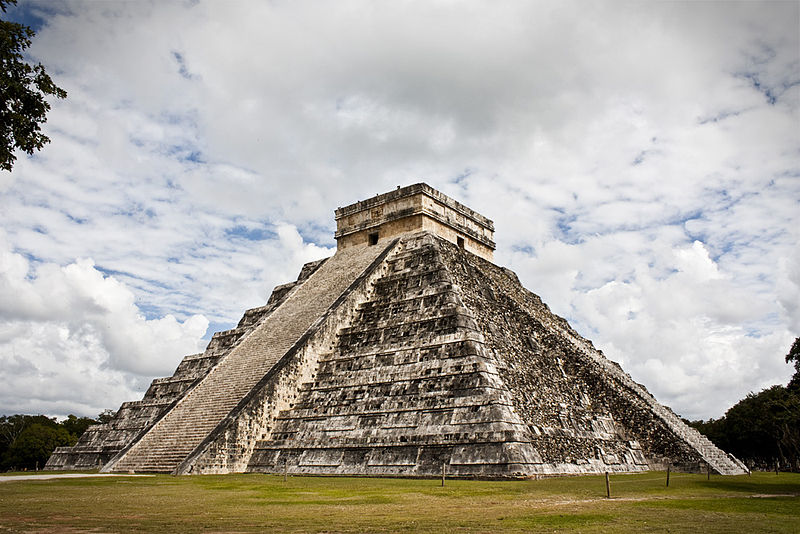'Big Blue Hole' Offers Clues To Collapse of Mayan Civilization

The collapse of the ancient Mayan civilization in the Yucatan Peninsula continues to baffle the world's scientists and researchers. The Mayans, known for their sophisticated calendars and writing system, disappeared for unknown reasons. Thanks to the "Big Blue Hole," scientists are closer to unearthing the mystery of the lost civilization.
A massive underwater sinkhole located in the Caribbean Sea off the coast of Belize, the Blue Hole could provide clues to the mysterious disappearance. Surrounded by reefs and caves, it is part of the Belize Barrier Reef Reserve System, declared a world heritage site by the United Nations Educational, Scientific and Cultural Organization.
The Blue Hole was made popular by deep-sea conservationist Jacques Cousteau, who declared it in 1971 as one of the best scuba diving sites in the world. Discovery Channel said it is one of the "10 most amazing places on Earth." National Geographic described it as more than 1,000 feet (300 meters) across and some 400 feet (120 meters) deep; the hole is the opening to what was a dry cave system during the Ice Age. When the ice melted and the sea level rose, the caves were flooded, creating a natural wonder.
New research by a team from Texas-based Rice University and Louisiana State University bolstered theories and pieces of evidence on how the Blue Hole might be connected to the Mayans' downfall, and might provide answers to the archaeological mystery. The team studied minerals taken from the sinkhole, identifying variations in color, grain size and layer thickness, as well as samples taken from the Belize Central Shelf Lagoon, a body of water attached to the mainland. Results of their findings were presented on Dec. 16 at the American Geophysical Union's 2014 Fall Meeting in San Francisco.
The team found out that the ratio of titanium to aluminum changed in the ninth and 10th centuries, when the Mayan civilization went into decline. More titanium means heavier rains affected the region, since the runoff from the area's volcanic rock was rich in the element. From 800 to 1000 A.D., there was a drop in the frequency of tropical cyclones in the peninsula, indicating that there was less rainfall. A major drought hit the region between 1000 and 1100 A.D., causing the Mayan City of Chichen Itza to collapse.
Earth Science Prof. Andre Droxler, director of Rice University's Center for the study of Environment and Society, told LiveScience, an online news magazine, that "when you have major droughts, you start to get famines and unrest." This gave weight to previous studies suggesting that drought and climate change precipitated the Mayas' downfall.
A 2012 study of a stalagmite from a Belize cave linked the region's population collapse to a "drying trend between 600 and 1000 A.D." Another study by an environmental archaeologist, published in LiveScience, said a "prolonged drought contributed to the collapse of the classic Mayan civilization." Other theories included famine and war which were believed to have been the results of prolonged dry spell.
Researchers believed the drought was triggered by a shift in the "intertropical convergence zone" which dumped water on tropical regions while drying out the subtropics, the magazine said.
The Mayan civilization, whose calendar system was believed to have prophesied the end of the world on Dec. 21, 2012, dominated the Yucatan in the first half of the first millennium A.D. The Mayan population was believed to have hit roughly two million in 250 A.D., hundreds of years after the first settlements were established in 1800 B.C. and existed for thousands of years in Mesoamerica, the areas now occupied by Mexico and Central America. But by 900 A.D., most of the Mayan cities, located in present-day Guatemala, El Salvador, Honduras and southern Mexico, had been abandoned. Why the Mayans left their cities and a civilization that gave them script, elaborate art, hieroglyphics, advanced mathematics, agriculture and architecture, was a baffling case for scientists and historians for decades.





